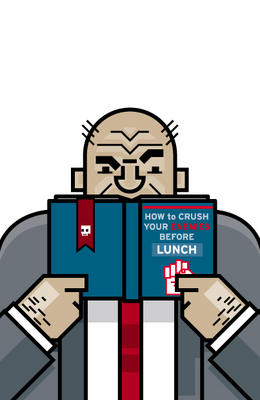 Are your written messages easy to read and understand? One way to know is to look at how often people respond positively to your requests; or whether they respond at all.
Are your written messages easy to read and understand? One way to know is to look at how often people respond positively to your requests; or whether they respond at all.Do people read your messages? Or do they skim them, save them to "read later" or otherwise ignore them? If your writing is hard to read or difficult to understand, people may not get your point, or they may decide to skip reading it entirely.
Clear, simple, easy-to-understand writing is a mark of an excellent communicator. It's worth taking some time and effort to improve. After all, people won't act on information they don't understand.
There's an easy way to check any Microsoft Word document for readability. It uses something called the Flesch-Kincaid readability test. The test has two parts: "reading ease" and "grade level."
The tests compare two things: the number of words per sentence, and the number of syllables per word. Shorter words, fewer syllables, and shorter sentences yield you a higher score.
The reading ease test scores you on a scale of 1 to 100 (100 being the best). The grade level test gives you a rough approximation of the U.S. grade level the text is most appropriate for.
Here's how to test the readability of any Microsoft Word document:
- In the tools menu, go to options
- Click the "Spelling and Grammar" tab
- Select "Show readability statistics"
The next time you do a grammar check, Word will show you how your document scored on readability according to the Flesch-Kincaid scale.
Language isn't math, and any mathematical test of readability is going to be imperfect. Some longer words are easy to understand, and some shorter ones quite difficult. But as a rough indicator of how you're doing, it's not bad.
This document, for example, scored 56.5 on reading ease and 9.0 on grade level. That puts it between Time magazine (52) and Reader's Digest (65).
If you want to try a deeper analysis of your text, check out textalyzer.
Give it a try before you send out your next proposal!
Keep in touch! Sign up to get updates and occasional emails from me.
8 comments:
i couldn't get the reading score....could you please help me to figure that out. i changed the setting as you suggested but am not getting score.
hey....i just figured that out :)
If you haven't already, read Barbara Minto's "Pyramid Principle". She seems to be the world's leading "How to make your writing understood" guru. I always thought of her as the perfect "Words" companion for XPLANE's "Pictures".
This should be applied to all laws, regulations, codes before then are enacted.
Leon Leslie
Actually this is underway, in the US at least. It's called The Paperwork Reduction Act.
I visited Sweden a few years ago and of the countries I have visited they seem to be doing the best job of keeping government communications simple and easy to understand.
We regularly use Flesch scores in our work at Blackfriars. Sadly, we have seen corporate press releases that have Flesch scores of 0. That means they are more readable than the US Tax Code (-16), but less readable than your average auto insurance policy (+10).
Readability is only the first step to good communication, but it is an important first step. It's great that more people are paying attention to it.
This is cool.
Hello!
Just wanted to add that there is a website that can calculate your score. Just copy&paste your text and press the "testen"-button.
http://www.leichtlesbar.ch/html/
It'a Swiss site, so it's in German, but you still get your score and that's all you want. ;-)
Enjoy,
Greets, Eugê!
Post a Comment